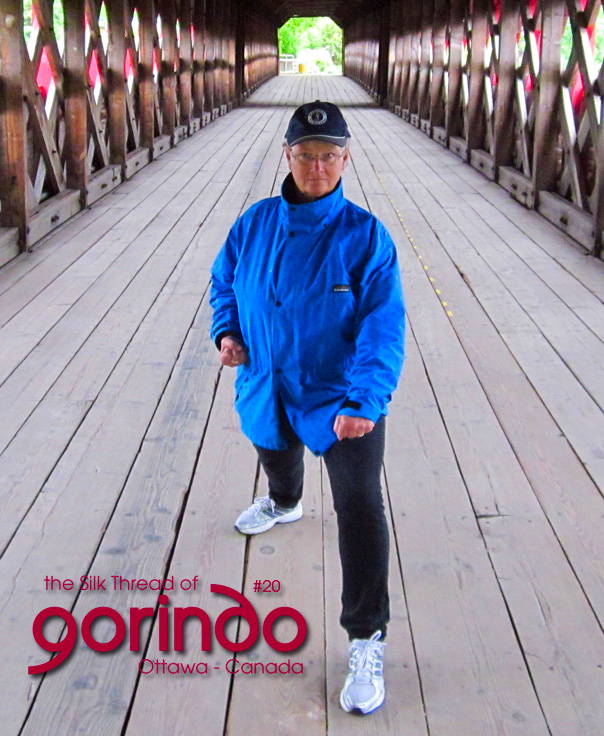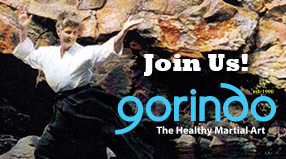The Silk Thread of Gorindo - Ottawa - Canada
Issue 20
- Fitness - Cat-Stretch & Climbing the Sky
Photo cover 'Roxanne Standefer - gedan barai’ ©2012 Photo by Claudio Iedwab
Kihon - How to Turn
Turning

Once we have a good control of stepping forward and backward, then we will be able to learn the change of direction of any walking sequence towards the desired angle. This will allow a greater range of action even with the use of the basic techniques. This is the preparation for acquiring a dimensional notion of space and the fundamentals for a better training of kata (forms).
Kihon training, at its elementary level, trains a 180° angle turn towards the back of the person.
As you may observe in the following turning illustrations, what apparently seems a totally new criteria of action, in reality is a re-ordering of sequences already learned. They are composed of the 1st part of the walking sequence (according to the specific stance in practice) with a turn or pivot that is then followed by the 2nd part of the sequence. The difference being that it ends with the same foot that initiated the turn.
We suggest the practice of the 180° angle turns only on the left shoulder side, until they feel comfortable and easy. After a period of practice that consolidates the turns, then include the other side as well. With time and practice, both sides will be trained with equal facility.
The last movement of a stepping sequence should be done with an audible expression of the kiai (a short yell that “emanates” from the hara or lower abdomen, center of energy), which is a powerful exhalation of air with a focused intention. The feeling should be as if we are putting everything on a task and without speculation for reserving energy it should be done as if there will not be another opportunity to repeat the action. (To learn more about kiai, please, read “Martial Arts - Mind & Body” by Claudio Iedwab & Roxanne Standefer, published by Human Kinetics).
Then, the mind as a “new page” will focus on the turning as a completely new task with an instant abandonment of the previous one. This is a very important aspect of the martial arts’ training, in which the detachment and giving up of past worries will allow us to be more present and “in the moment” while we are doing something. Later we will have time for study and introspective analysis that will provide us with elements to improve or stepping stones for more progress.
Keep in mind to look first toward the new direction and then turn the head. The head will lead the body as does a steering wheel in an automobile. It will provide balance, a sense of space and distance, and the projection of inner intentions and decisions.
There are several ways of turning 180° angle but the one presented in this part of the Course, will allow you to acquire the rest of them in a progressive manner.
Keep in mind also that the learning of the turning may require “breaking” the sequence in several parts until they will link smoothly and fluidly. It is not necessary to start with jerky and sudden motions if then there is a need to stop to figure out what to do next. It is a better choice to move slowly and with control to allow a smooth transition of movements. Later it will be co-ordinated with a “intentional” kiai and refreshing exhalation that will awake the senses and renew the awareness.
The speed will come with physical practice, mental readiness and spiritual presence; elements that are essential in self-defence circumstances.
by Claudio Iedwab & Roxanne Standefer
Originallly published in the Gorindo Student Manual by Claudio Iedwab & Roxanne Standefer
Paulina Palele & Joe Pach, turning kokutsu-dachi ©2011 Photo by Claudio Iedwab
- Fitness - Cat-Stretch & Climbing the Sky
« Click the Subscribe link on the left





